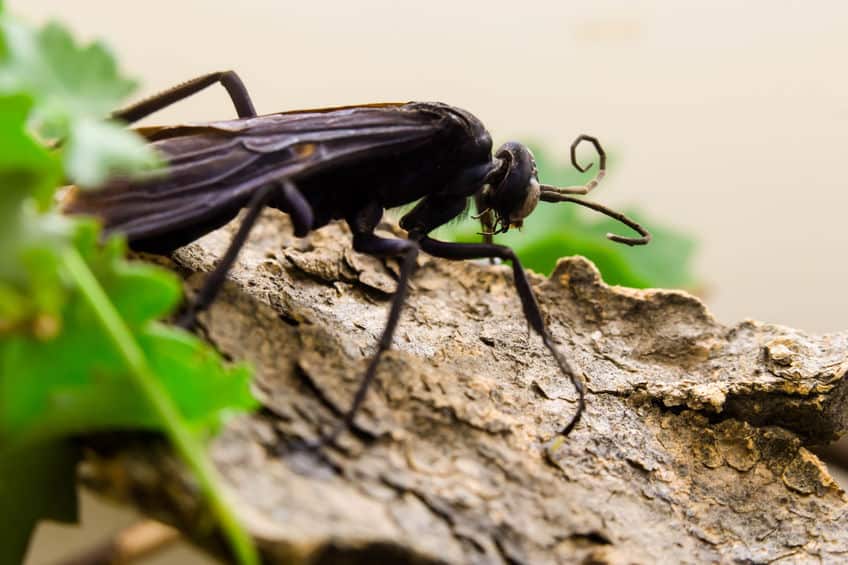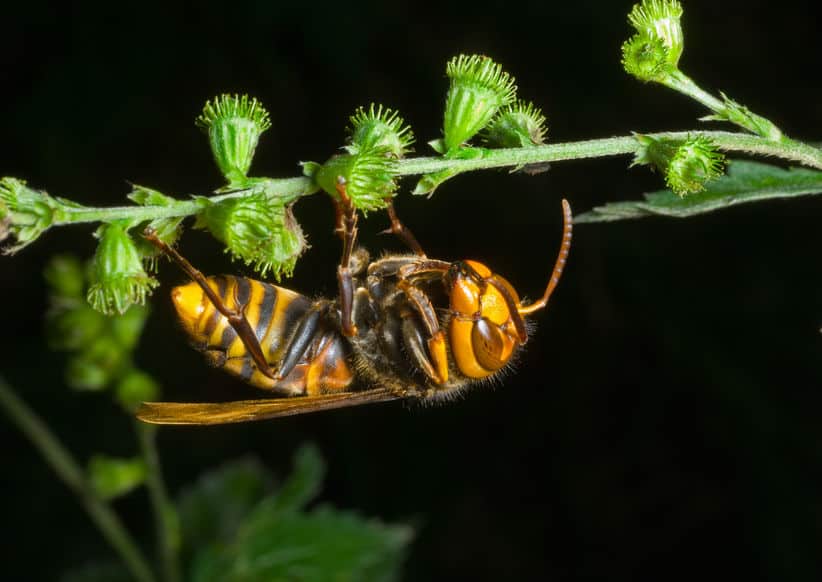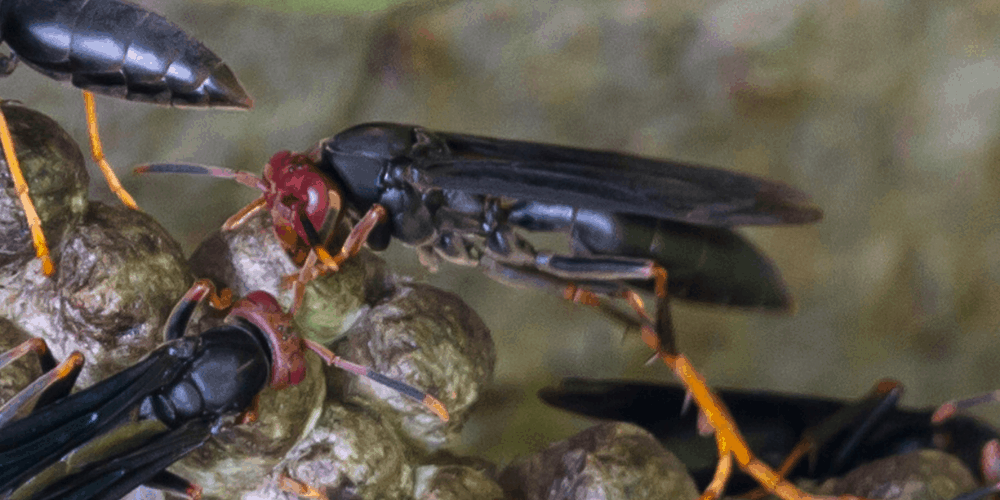When it comes to scary wasps there really isn’t a shortage. Here is a sample of some of the scariest.
The Tarantula Hawk

Found in a number of locations worldwide including North America it makes this list for both its extremely painful sting and for feeding live tarntulas to its young.
The tarantula hawk preys on tarantulas. They will sting the tarantula and paralyze them with strong venom. Once paralyzed the wasp will move the spider, still alive, to its nest. Once there the wasp lays a single egg on the spider. The egg will hatch and develop into a larva that will gradually feast on the inside of the paralyzed spider.
What makes this even more disturbing is that they have evolved to spare the spider’s vital organs until last to keep the spider alive for as long as possible to prevent any decay from occurring.
Being paralyzed and then slowly eaten from the inside out truly is the stuff of nightmares.
The sting of the tarantula hawk is rated in the highest category in Schmidt’s pain index. He described it as “blinding, fierce [and] shockingly electric”. The warrior wasp is the only other wasp to have a sting ranked at the top of the pain index. Read more about the tarantula hawk here.
The murder hornet

Also known as the Asian giant hornet this is the biggest social wasp on the planet and its sting reflects that. It is long enough to penetrate clothing and the amount of venom released per sting is greater than other wasps.
Known as the ‘murder hornet’ this species kills up to 100 people each year. One sting won’t kill people, but these are social wasps and can attack in numbers.
This wasp also is the honey bee’s worst enemy. They actively target honey bee nests and feast on the bee brood within the nest. They decapitate the bees and can kill every wasp within just two hours in a killing rampage.
Typically found in Asia, but in 2019 several nests were found on Vancouver Island. They were immediately eradicated, but the threat still exists that they could spread which would be devastating for the local honey bees. Read more about the murder hornet here.
The Warrior Wasp

The warrior wasp or synoeca is found in South America and is the only other wasp to be given the highest score on Schmidt’s pain index alongside the Tarantula Hawk. In his words, the sting from the warrior wasp is “Torture. You are chained in the flow of an active volcano. Why did I start this list?” The pain also lasts for 2 hours or more.
They are regarded as extremely aggressive and will beat their wings in a fearsome display at anything getting anywhere near their nest. As social wasps, this also makes them more dangerous as they can attack in numbers. Read more about the warrior wasp here.
The King of Wasps

One look at this wasp tells you why it’s made this list. The megalara garuda from Indonesia is known as ‘the king of wasps’. It was only discovered in 2012 and very little is known about it. They are 1.3 inches long (3.3 cm). Their mandibles (claw-like mouthparts) are far larger than other wasps being almost as long as their forearms.
The pain of its sting is yet to be recorded as it is so rare and an unknown quantity, there aren’t many volunteers lining up to find out.
